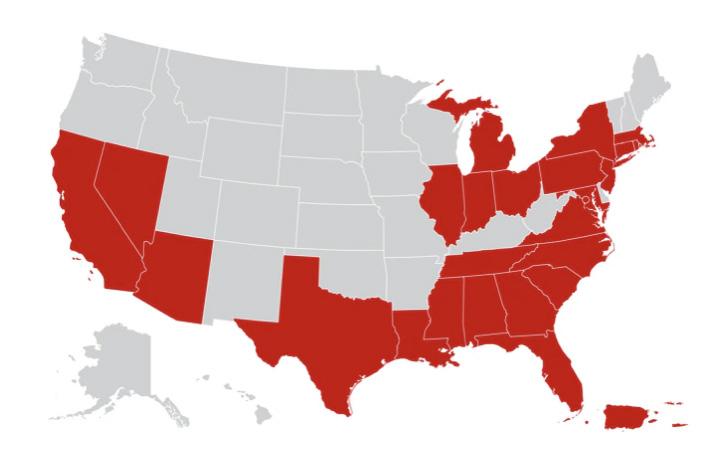
2 minute read
No-cost, no-catch health screenings Project Health
Your Neighborhood CVS is there to make you community healthier.
Since 2006 Project Health has helped communities stay healthy. We’ve hosted more than 10,000 free in-store events No-cost No-catch health screenings and healthcare resources for over 1 million patients. And that’s just the start.
Advertisement
Now we’re expanding our reach introducing new digital tools to help you stay on track bringing events to more cities across the U.S. and taking our services on the road to bring health care anywhere.
Health screenings and additional offerings:
• Body mass index (BMI)
• Blood pressure
• Glucose*
• Total cholesterol*
• Individual health access plan
• Professional consultations
• Smoking cessation counseling
• Diabetes resources
Making women’s health a priority
We know that women’s health is good business. Proactively addressing women’s health across the lifespan benefits us as employers, as plan sponsors, and as human beings. Making up a majority of the workforce –both paid and unpaid – as well as the majority of health care spend, women have a significant downstream effect when their health needs are unmet.
Join us in a broad new approach to women’s health, one that prioritizes physical, emotional, and social health throughout their lives. Together, we can ensure that Healthier Happens HERe for women, their families, and their communities.
Over the past few decades, our understanding of women’s health has changed and continues to evolve. We have better knowledge about the barriers women face when trying to access care. But more must be done to better support women on their unique health care journeys.
Starting this month, CVS Health is working to ensure that Healthier Happens Here for women.
We are dedicated to making it easier for women to access the care and support they need – wherever they are in life – to help improve their physical and mental wellbeing, leading to improved outcomes, greater productivity and job satisfaction, and lower health care costs for them, their employers, and the health care system.
Widening the lens on women’s health
To truly close the equity gap, it’s critical to expand our definition of women’s health beyond limited, traditional areas of focus, like reproductive health.
While we’re all aware of health issues specific to females (i.e. menstrual cycle disorders, pregnancy, menopause, organ-specific cancers), we should also be aware that there are health conditions with different prevalence, presentation, and treatment response for women, including depression, heart disease, stroke, and Alzheimer’s disease.
Imbalances in access and outcomes
Although women are often known as the “chief health officers” of the family, they encounter barriers when it comes to taking care of themselves.
On top of that, certain social and environmental factors can create imbalances in access and outcomes in women. Lower incomes and higher rates of uninsured and underinsured women restrict access to care, and social stigma may restrain women from seeking needed support.
The reality is, with women making up nearly half of the workforce but more than half of health care spend, women have a significant downstream effect when their health needs are unmet.
By widening our lens beyond the reproductive years, acknowledging the health conditions that differently and disproportionately affect women, and intensifying our focus on healthier women, we can not only have a significant, positive impact on our members, but we can also net a healthier bottom line for our clients.








